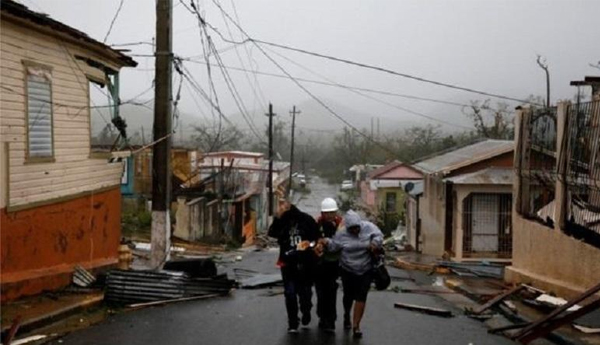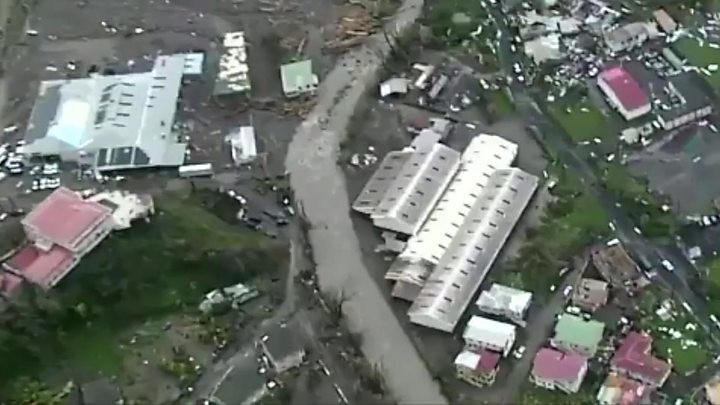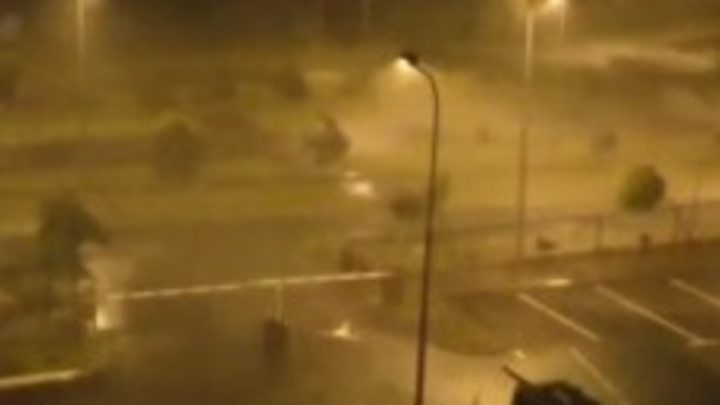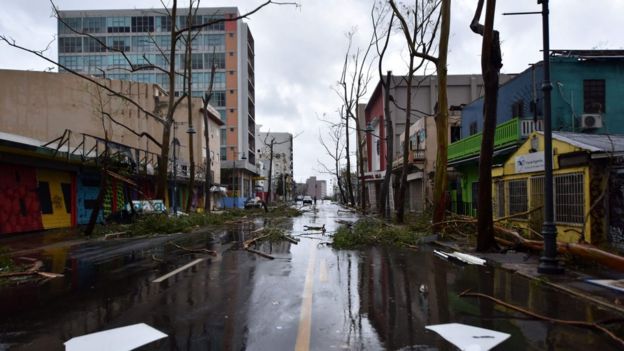Hurricane Maria: Whole Of Puerto Rico Without Power
Hurricane Maria has knocked out power to the entire island of Puerto Rico, home to 3.5m people, emergency officials have said.
Abner Gómez, head of the disaster management agency, said none of the customers of Puerto Rico’s Electric Power Authority had any electricity.
The US National Hurricane Center said “catastrophic” flooding was sweeping parts of the island.
Maria is moving away from Puerto Rico, weakening to a category two storm.
“When we are able to go outside, we are going to find our island destroyed,” Mr Gómez was quoted as saying by the El Nuevo Dia newspaper.
“It’s a system that has destroyed everything in its path.”
The US territory’s governor, Ricardo Rossello, issued a curfew for 18:00 local time (22:00 GMT) on Wednesday evening through early Saturday morning.
At the scene: A city under curfew
By Will Grant in San Juan, Puerto Rico
After Hurricane Maria hit Puerto Rico – the biggest storm to make landfall on the island in almost a century – the governor of San Juan has ordered people to stay indoors between 18:00 and 06:00.
In part it is to protect people from accidents with so many electrical cables down and debris in the streets. Furthermore there are thousands of properties empty across the island after people sought refuge with family and friends or in emergency shelters.
Once the winds finally died down enough, residents ventured out to assess the damage. On first impressions, it seems the city has avoided widespread devastation but roofs have been ripped off homes, many trees are down, some balconies have fallen from the front of buildings and I saw at least one building that had completely collapsed near the waterfront.
The real question of how bad Maria has been for Puerto Rico will emerge as news comes in from the more remote regions. Thankfully though, it does seem there has been no major loss of life.
Earlier, Mr Rossello asked President Donald Trump to declare the island a disaster area after the storm unleashed heavy flooding and life-threatening winds.
He said major damage was inevitable, although 500 shelters had been established to protect people.
The devastating storm has already left seven people dead on the island of Dominica, which was badly affected on Monday.
Aerial footage shows flattened houses and the death toll on Dominica is likely to rise, with details remaining scant as communication links are down.
Images shared on social media show roofs being stripped away as winds as strong as 140 mph (225 km/h) whipped trees and power lines in Puerto Rico’s capital city, San Juan.
The US territory is facing $73bn (£53bn) in public debt and the damage left by Maria could exacerbate its financial crisis. Declaring a disaster would mean the island could receive more federal assistance in its recovery.
“God is with us; we are stronger than any hurricane,” Mr Rossello said. “Together we will rise again.”
Maria made landfall in Yabucoa in the east of Puerto Rico early on Wednesday as a category four storm, according to the US National Hurricane Center (NHC). It was the first category four hurricane to directly hit the island since 1932.
Hours earlier, Maria barreled through the US Virgin Islands’ St Croix as a category five storm, sustaining winds of up to 175mph (281km/h).
There was flooding in the French territory of Guadeloupe, where one person was killed by a falling tree and another died on the seafront. At least two others were missing after their ship sank near Desirade, the easternmost island in the archipelago.
Maria is the second devastating storm to hit the Caribbean this hurricane season – the first being category five Irma earlier in September. Maria began moving roughly along the same track as Irma.
Courtesy : BBC





